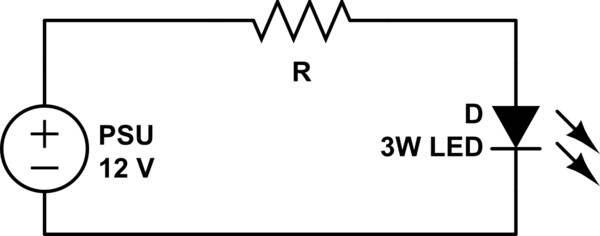You are faced with several problems. But I want to zero-in on a comment you made:
If you read the question I'm powering them with 3.3V instead of 3.6V.
3.6V is the upper limit and I'd like to stay a bit lower than that.
The problem with your statement is that you don't get to make that choice. You don't get to choose the operating voltage for each LED. (Well, you could by just wiring them directly to a very low impedance, high current compliance power supply. But that would be disastrous, in general.)
Even binned (you can buy them binned or unbinned) LEDs will have varying voltages. Since their brightness is more closely correlated to (predicted by) their current, you will want to control current and not voltage.
So you don't get to pick this value at the precision level you suggested above. In your example, you went to great lengths to show the power dissipation in the voltage dropping resistor for your single LED operating from \$12\:\textrm{V}\$. And you used \$3.3\:\textrm{V}\$ in your calculations as though you get to choose that. But you don't and that would NOT necessarily be the voltage you'd measure at the LED if you did it. And if you used a different LED from the box, you'd get a different value, too.
Since your assumptions are false, your conclusions are at the very least risky.
As you are already learning from the many responses, you need to think differently. First off, you are talking about a LOT of power even if you only consider 100% efficiency with your LEDs. Because of the magnitude of that alone, more thought and the consideration of different alternatives (because you will have to accept the idea of more budget and space to consider more) is important.
The first question you need to ask yourself is if you are going to insist on the use of your existing \$12\:\textrm{V}\$ power supply, or if you are willing to shelve it and find something more appropriate to the task. If you intend on keeping the existing \$12\:\textrm{V}\$ power supply, then this limits your options in one direction (or at least changes the way you look at some.) If you are open to the idea of a different answer, then you might consider constant current power supply devices with larger compliance voltages (how high of a compliance voltage is yet another problem you need to face, as some voltages become a human safety issue and some are far less so.)
I have to assume you've already got the dissipation issue in hand (partly, if for no other reason, then because you have 50 of these devices and they will take up space and you know enough to mount these well and appropriately.)
If you choose a constant current supply with a specified maximum compliance voltage, then this will dictate the number of LEDs you can put in series. For this, definitely use the maximum voltage specified for the LED as a "worst case" in computing the compliance voltage to look for when selecting the CC supply. If that voltage is over \$48\:\textrm{V}\$, or so, it is moving into the unsafe territory. So keep that in mind, as well. The efficiency of this circuit probably can be determined by looking over the specifications of the supply you choose.
If you choose a constant voltage supply, you may have more and cheaper options (or not, I honestly do not know.) Here, you are looking for the compliance current and need to stay under that. Choose a voltage you want to work with, as high as possible in this case but not so high that it breaks your own "concept of safety" in this situation. Again, if that voltage is over \$48\:\textrm{V}\$, or so, it is moving into the unsafe territory. But you otherwise may want to select as high of a voltage as possible (but less than \$200\:\textrm{V}\$ in all cases since your 50 LEDs cannot possibly need more than that), consistent with your own sense of safety. Here, what you then need is a constant current circuit to put between the power supply and the LED chain(s) so that you can limit the current just like a constant current supply would otherwise do for you. These circuits are not hard. But they do require some "headroom voltage" in order to work. So you have to consider that headroom in totaling your numbers. The inefficiency here will be due to the headroom voltage of the added CC circuit times the CC current setting (it's required power) vs the estimated total voltage of the LEDs in the chain it drives times the CC current. The higher the voltage you can ascribe to the LED chain, the better your efficiency will likely be. But you run up against that safety issue at some point and you need to make decisions here. This is why running the LEDs, one per chain, with your \$12\:\textrm{V}\$ power supply is such a bad decision from an efficiency point of view.
Efficiency certainly should be one of your goals, considering all of this.
I can't offer any more advice without knowing where your own limits are at. Safety issues with the voltage, the trade-offs you imagine in running the LEDs in series chains vs running them individually, etc. (For example, do you need the other 49 to continue operating if one of the LEDs "burns out" or if you remove it? ... assuming they are removable, at all. How would I know your thoughts here?)



17 * (3W*3diodes + 1.5W)). Better way to avoid using many resistors, but seems still inefficient to me. \$\endgroup\$